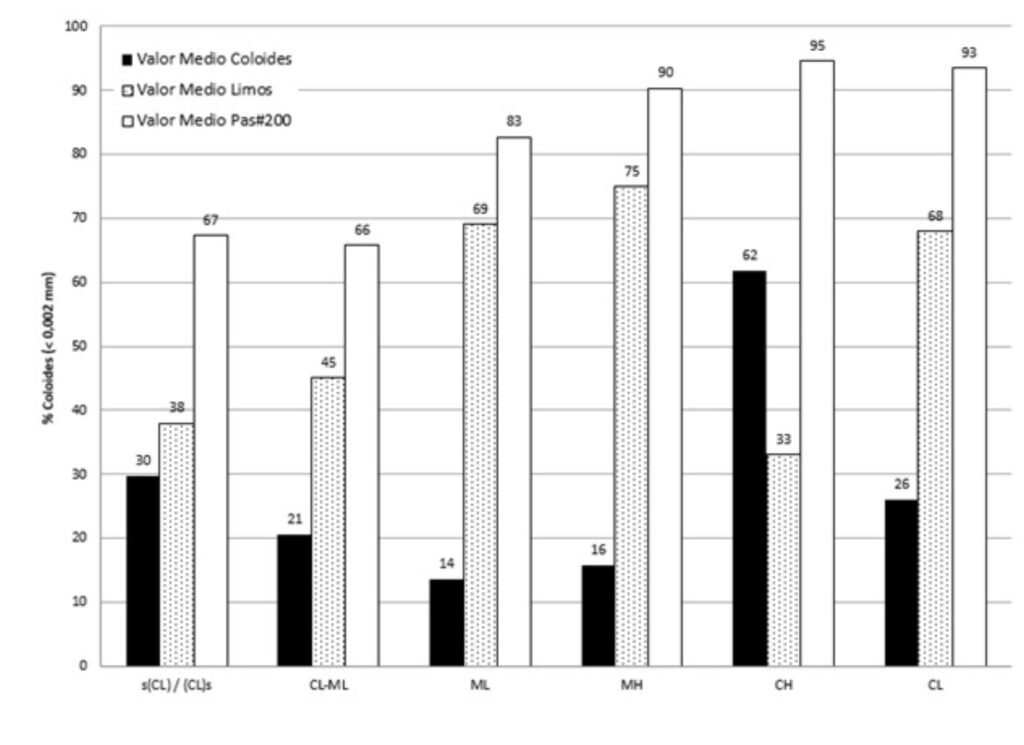

The nature of the soil
To understand the nature of soil, the first thing to consider is that soil is a conglomerate of particles. But, particles of what? Usually, particles of mineral material, coming from weathering and other geological processes that have affected a rock mass. Do you want to know more? Continue reading this post…
Content
What is soil?
For Geotechnical Engineers, the main material they work with is soil, so it is vital for them to know and understand how soil behaves under different conditions.
But, what is soil? The question is valid, because it usually generates certain doubts in engineers who are beginning to take their first steps in Geotechnical Engineering, or perhaps in some users of geotechnical studies (such as specialists in structures or hydraulics, for example), and even in geologists, who are a fundamental pillar to understand the environment in which the materials that constitute the soil at a given site were generated and/or deposited.
Thus, it can be stated that soil has different definitions, depending on who defines it. That is to say that soil is defined differently by, for example, geotechnical engineers, geologists or agronomists. However, from the point of view of Geotechnical Engineering, it can be said that soil is, first of all, a very complex material, which has three (3) main characteristics (see Figure 1):
- It is made up of individual particles.
- The capacity of the soil to resist stresses is generated by the shear strength at the contacts between the particles.
- Water pressure reduces the shear strength of the soil. And, in some cases, surface tension increases the strength of the soil by means of what in some books is called "apparent cohesion" (the typical case is a sand castle).

Figure 1 Characteristics of soils.
These three characteristics control the response of the soil when it is subjected to external stresses from civil structures, so they must be adequately understood in order to achieve a thorough understanding of the behavior of the loaded soil.
Coarse and fine soils
In Geotechnical Engineering, soils are separated into coarse soils (such as gravels and sands) and fine soils (such as silts and clays), and engineers use Soil Mechanics to understand and predict the mechanical behavior of soils subjected to stresses transmitted by civil structures. Figure 2 shows this typical separation for studying and analyzing soils.

Figure 2 Differentiation between coarse and fine soils.
Taking particle size into account, gravels can be said to be small pieces of rock, typically containing several minerals; whereas sands are smaller pieces, whose grains usually consist of a single mineral. When it is not possible to observe individual grains with the naked eye, then the soil is either a clay, a silt, or a mixture of both (Holtz et al, 2011).
Particle shapes and their engineering behavior
Figure 3 shows two photographs taken with an electron microscope. The first corresponds to a sample of coarse soils (part "a"), and the second to fine clayey soils (part "b"). The difference in particle shape is evident. Additionally, it is important to note that in the coarse, larger particles, gravitational forces predominate, while the fine particles are very active electrochemically, given their shape and size and their large specific surface area.

Figure 3 Particle shape (Source: Amundaray y Beltrán, 2005; McPhee et al, 2015).
In general, soil texture, especially in the case of coarse soils (i.e., gravels and sands), has a certain relationship with their engineering behavior. In the case of fine soils, on the other hand, the presence of water significantly affects their engineering response, since water affects the interaction between grains, and this can affect plasticity (simply defined as the ability of the soil to be shaped) and cohesion (i.e., the ability of the soil to stick together).
While sands are non-plastic and non-cohesive, clays are plastic and cohesive. Silts are found between sands and clays: they are fine-grained, but non-plastic and non-cohesive.
Fine soils: silts or clays?
Another important thing to mention is that, usually, those soils whose behavior is strongly affected by the presence of clay minerals (colloids, particles smaller than 2μ in size), for simplicity are referred to as "clays". However, what should really be said is that they are "soils that contain enough clay minerals to affect their behavior". Why? Because soils are always a mixture of particles (Holtz et al, 2011).
The bar graph shown in Figure 4 is an analysis of the distribution of particles passing through the #200 sieve carried out on 220 samples. It is clearly observed that, in the cases of soils that classify as clays, the colloid content (particles smaller than 2μ) varies between 20% and 60%. The rest is silt.

Figure 4 Distribution of particles passing through the #200 sieve for soils classified as silts or clays according to the USCS (Source: Boiero, 2019).
According to the above, this simplification that is used in practice when referring to this type of soils, must be properly understood, in order to avoid confusion in the understanding of soil behavior.
References
- Boiero, A. (2019) “Caracterización Geotécnica de Suelos”. Jornadas Especiales de Geotecnia. Universidad Católica Andrés Bello. Caracas, Venezuela.
- Amundaray, J. y Beltrán, R. (2005) “Los Suelos Colapsables de Jose”. XVIII Seminario Venezolano de Geotecnia Geoinfraestructura: “La Geotecnia en el Desarrollo Nacional”. Caracas, Venezuela.
- Holtz, R.; Kovacs, W. & Sheahan, T. (2011) “An Introduction to Geotechnical Engineering”. Second Edition. Prentice Hall. New Jersey, USA.
- Mitchell, J.K. & Soga, K. (2005) “Fundamentals of Soil Behavior”. Third Edition. John Wiley & Sons, Inc. New Jersey, USA.